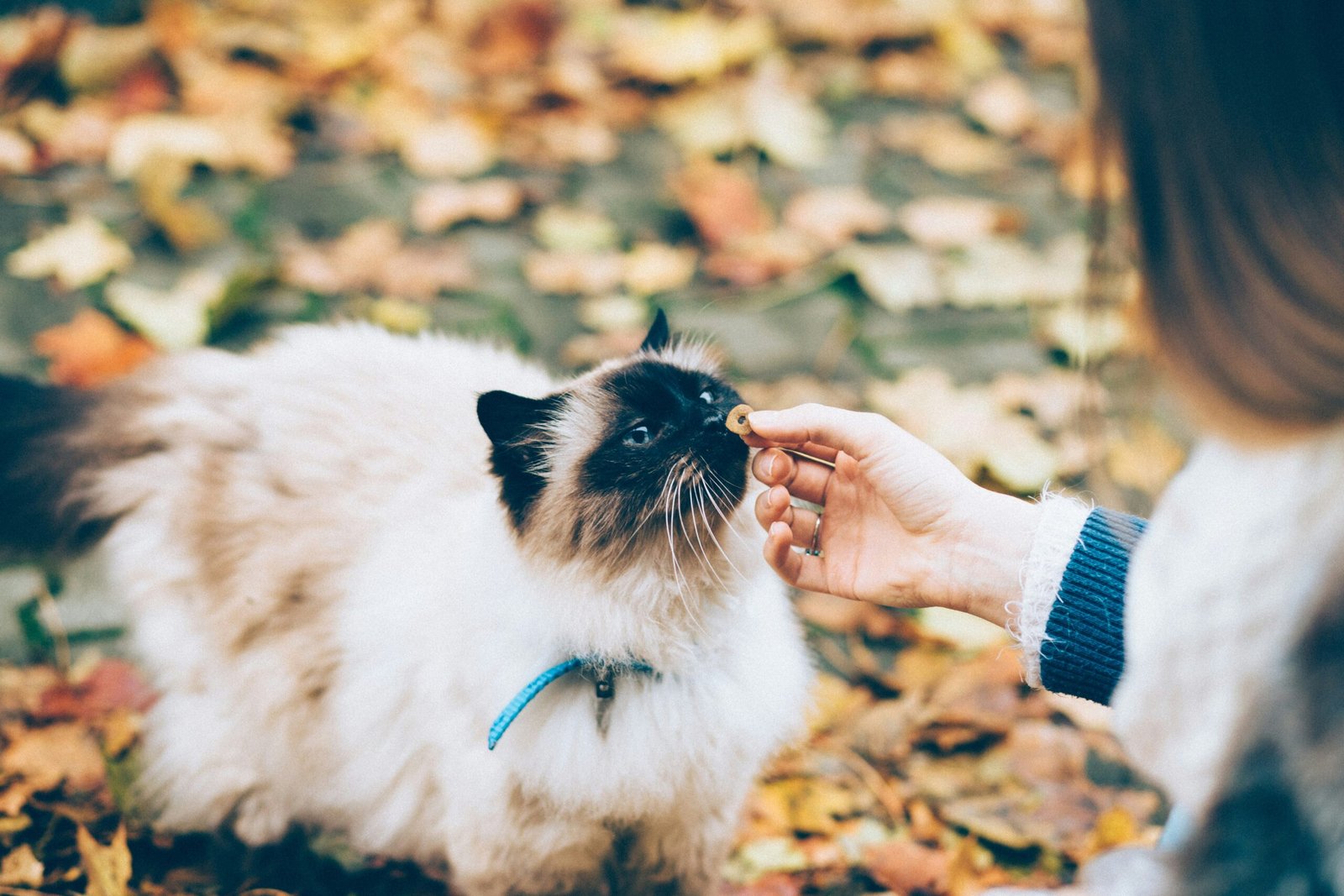“`html
Understanding the Aging Process in Pets
As pets mature, their bodies undergo several physiological and behavioral transformations that significantly influence their overall health and well-being. Observing how these aging changes manifest in both dogs and cats can assist pet owners in tailoring appropriate care strategies for their senior companions.
One of the most apparent signs of aging in pets is reduced mobility. Dogs and cats may experience stiffness and decreased flexibility due to conditions like arthritis or general muscle wear and tear. This reduced mobility can result in a reluctance to engage in physical activities they previously enjoyed, such as running or jumping. Pet owners might notice their senior pets being less enthusiastic about walks or playtime.
Changes in appetite are also common among aging pets. Some pets may exhibit a decreased interest in food, which can be linked to dental issues, changes in metabolism, or age-related conditions like chronic kidney disease. Conversely, increased hunger can also be a symptom of underlying health problems, such as hyperthyroidism in older cats. Monitoring your pet’s eating habits and consulting with a veterinarian can help in identifying these issues early.
Cognitive decline is another significant aspect of the aging process. Senior pets might display symptoms akin to dementia in humans, such as disorientation, changes in sleep patterns, and a decline in social interactions. Dogs might become easily confused or fail to recognize familiar members of the household, while cats could exhibit altered grooming habits or litter box usage. Recognizing these cognitive changes is essential for maintaining a supportive and enriching environment for senior pets.
Understanding these aging signs and symptoms in pets equips owners with the knowledge to make informed decisions about their pets’ health care. By identifying the natural progression of aging, pet owners can implement targeted interventions that contribute to the well-being and quality of life of their beloved senior pets.
Nutritional Needs for Older Pets
Proper nutrition is fundamental to maintaining the health and well-being of older pets. As pets age, their dietary needs undergo significant changes, making it crucial to adjust their diet accordingly. For senior pets, high-quality proteins become increasingly important. These proteins support muscle mass and repair tissue, which are essential due to the natural muscle loss that occurs with aging.
Essential fatty acids, particularly Omega-3 and Omega-6, play a critical role in maintaining the overall health of a senior pet. These fatty acids help in reducing inflammation, promoting a healthy coat, and supporting cognitive function. Including sources such as fish oil or flaxseed in their diet can be beneficial. Additionally, antioxidants from fruits and vegetables help combat oxidative stress, a common issue in aging pets, protecting cells from damage and supporting a robust immune system.
Selecting the best food for senior pets involves more than just meeting nutritional requirements; it’s also about addressing specific health concerns. Weight management is a common issue for older pets due to decreased activity levels and slower metabolism. Opt for balanced, nutrient-dense food that helps maintain a healthy weight without excessive calories. Look for products labeled specifically for senior pets, which typically contain lower fat content and higher fiber to promote satiety.
Sometimes, dietary supplements can be beneficial for addressing age-related health issues. Glucosamine and chondroitin supplements, for example, are often recommended to support joint health and reduce arthritic discomfort. Probiotics and prebiotics can aid in maintaining digestive health, which can be particularly beneficial as the digestive efficiency of pets may decline with age.
In conclusion, understanding and adapting to the changing nutritional needs of senior pets is paramount for their health and longevity. By providing a diet rich in high-quality proteins, essential fatty acids, and antioxidants, and considering dietary supplements where necessary, pet owners can ensure their older companions enjoy their golden years in good health and happiness. For more detailed guidance and specific product recommendations, visit this link.
Exercise and Mobility
Physical activity is an essential aspect of maintaining the overall health and wellness of older pets. As pets age, their exercise needs naturally change, requiring adjustments in their routines to accommodate their evolving physical capabilities. For senior dogs and cats, focusing on low-impact activities can be highly beneficial in promoting mobility and preventing obesity, while also ensuring that they do not experience unnecessary strain or injury.
For senior dogs, gentle walks are a fantastic way to keep them active. It is advisable to opt for multiple shorter walks throughout the day rather than one long session. This approach minimizes stress on their joints and allows for consistent, manageable exercise. Swimming is another excellent low-impact activity that can be immensely advantageous, as it provides a full-body workout without placing undue pressure on the joints. Engage your dog with interactive toys or mild play sessions to stimulate both their mind and body.
When caring for older cats, encourage movement by providing interactive toys that promote gentle play. Laser pointers, feather wands, and automated toys can be enticing, ensuring they remain active. Additionally, creating an environment with multiple vertical spaces, such as cat trees or shelves, can encourage climbing and jumping, further supporting their agility. However, ensure these climbing structures are stable and accessible to prevent falls and injuries.
Joint health is critical for the mobility of senior pets. Supplements such as glucosamine, chondroitin, and omega-3 fatty acids can help support joint function and alleviate discomfort caused by arthritis or other joint-related issues. Always consult with your veterinarian before introducing any supplements to ensure they are appropriate for your pet’s specific needs.
Modifying the home environment can also facilitate easier movement for senior pets. Providing orthopedic bedding, adding ramps to access high places, and ensuring that food and water dishes are at an accessible height can significantly improve their comfort and quality of life. Non-slip mats or rugs can help to prevent falls on slippery surfaces, further enhancing their safety and mobility.
Regular Health Check-Ups
As pets advance in age, frequent veterinary visits become crucial for maintaining their health and well-being. Regular health check-ups allow veterinarians to monitor and manage any emerging health issues, thus ensuring a higher quality of life for your senior pet. Scheduling exams every six months is generally recommended for older pets, although your vet might suggest a different frequency based on individual health conditions.
During these check-ups, routine blood work is often conducted to assess liver and kidney functions, thyroid levels, and other vital parameters. Blood tests can reveal any underlying conditions early on, allowing for timely intervention and treatment. Dental health checks are equally important; older pets are more prone to dental problems such as gum disease, which can impact their overall health. Your vet may recommend professional cleaning to prevent or address dental issues.
Regular health check-ups also enable the early detection of age-related diseases, which are common in older animals. For instance, arthritis is a frequent concern that can significantly affect your pet’s mobility and comfort. Detecting arthritis early allows for the implementation of pain management strategies and mobility aids to improve your pet’s quality of life. Similarly, conditions like diabetes and kidney disease are more prevalent in senior pets and can be managed more effectively if caught early.
Additionally, your veterinarian can provide tailored advice on diet, exercise, and lifestyle modifications suitable for your senior pet. These recommendations can significantly contribute to their overall health and longevity. Ensuring that your older pet undergoes regular health check-ups is one of the most proactive steps you can take to enhance their well-being and longevity.
Maintaining Mental Stimulation
Ensuring the cognitive health of senior pets is essential for their overall well-being. As pets age, their mental acuity can decline, making it crucial to incorporate activities that keep their minds sharp and engaged. One effective strategy is the use of engaging toys and puzzles. Interactive toys, such as treat-dispensing puzzles or toys that require problem-solving, can provide both entertainment and mental exercise. These toys challenge older pets to think and can significantly reduce cognitive decline.
Interactive games are another excellent method for mental stimulation. Simple activities like playing fetch can be adapted to fit the physical capabilities of senior pets while still engaging their minds. Hide-and-seek games using treats or favorite toys can also spur interest and cognitive activity. Additionally, training sessions with new commands or tricks, even if the pet already knows many, can boost their mental function and keep their minds engaged.
Maintaining a consistent routine is equally important for supporting cognitive function and reducing anxiety in aging pets. Predictability in daily activities, such as feeding times, walks, and play sessions, helps elderly pets feel secure. This regularity can alleviate confusion and stress, which are often exacerbated by aging. Moreover, consistent interaction with family members and gentle socialization with other pets can also play a crucial role in mental stimulation.
It is vital to tailor these activities to the specific needs and limitations of each senior pet. Observation and understanding of their response to various stimuli can help owners adjust the level of challenge and engagement appropriately. Whether it’s through introducing new puzzles or maintaining a familiar routine, consistent mental stimulation will positively impact the quality of life for your senior pet.
Managing Chronic Conditions
As pets age, they commonly develop chronic conditions that necessitate consistent and attentive management. Among the most frequent ailments in senior pets are arthritis, diabetes, and heart disease. With arthritis, it’s crucial to incorporate a multifaceted approach, often involving medications such as nonsteroidal anti-inflammatory drugs (NSAIDs) and supplements like glucosamine and chondroitin. Incorporating regular, low-impact exercises, such as swimming or walking, can also help maintain joint mobility and alleviate pain.
Diabetes in older pets, much like in humans, requires vigilant monitoring and regulation. This typically involves administering insulin, maintaining a balanced diet tailored to manage blood sugar levels, and regular vet check-ups to adjust treatment as needed. Ensuring that exercise is part of your pet’s routine can also contribute to stabilizing glucose levels.
Heart disease equally demands careful management to ensure your pet’s longevity and quality of life. Veterinarians often prescribe medications to manage symptoms and prevent the progression of the disease. Diet modifications, aimed at reducing salt intake and incorporating heart-healthy nutrients, can further support cardiovascular health. Regular evaluations, including blood tests and echocardiograms, are integral in monitoring the condition and modifying treatment plans accordingly.
Effective pain management is another critical aspect of caring for a senior pet with chronic conditions. Besides pharmacological interventions, techniques such as physical therapy, acupuncture, and the use of supportive devices like orthopedic beds or ramps can offer substantial relief. Customizing the environment to suit their needs, such as providing easy access to food, water, and litter boxes, can improve their daily comfort.
Continual and vigilant monitoring is essential for adjusting care plans as your pet’s condition evolves. Regular veterinary visits, coupled with keen observation of any changes in behavior or physical capabilities, enable timely adjustments to treatment protocols. This dynamic approach ensures that your pet remains comfortable and as healthy as possible throughout their senior years.
Creating a Comfortable Living Environment
Aging pets often require special attention and modifications to ensure they remain comfortable and safe within their living environments. As pets age, their mobility and sensory capacities, such as sight and hearing, may decline. To accommodate these changes, pet owners can take several practical steps to make their homes more senior pet-friendly.
Firstly, consider your pet’s bedding. Older pets often suffer from arthritis and joint pain, which means they need soft, supportive beds to reduce pressure on their joints. Memory foam beds can provide the necessary comfort and support. Place beds in accessible areas to prevent your pet from having to climb stairs or jump onto high surfaces.
Secondly, ramps can be exceptionally beneficial for senior pets. Whether it’s helping them get on and off furniture or assisting them in climbing stairs, ramps reduce the risk of falls and joint strain. Ensure these ramps are stable and have a non-slip surface to further prevent accidents.
Equally important are accessible food and water stations. Elevated dishes can aid in easier swallowing and digestion for older cats and dogs, especially those with neck or spine issues. Ensure water is always within reach to promote hydration, as older pets are prone to dehydration.
Creating a stress-free environment is also crucial for your senior pet’s well-being. Keep noise levels down and provide quiet spaces where they can retreat and relax. Consistent routines help minimize anxiety by offering predictability. Additionally, consider pheromone diffusers, which can help calm and soothe anxious pets.
By dedicating attention to these aspects, pet owners can significantly enhance the quality of life for their aging companions. Implementing these easy, practical changes will not only make your home more senior pet-friendly but also support your pet’s overall health and happiness as they continue to age gracefully.
End-of-Life Care Considerations
End-of-life care is a profoundly sensitive yet indispensable facet of senior pet care. Recognizing when a pet is nearing the end of life is crucial for making empathetic and humane decisions. Pet owners should be vigilant for signs such as severe, persistent pain, loss of appetite, significant weight loss, prolonged lethargy, and loss of interest in previously enjoyed activities. Consultations with a veterinarian can help ascertain whether these symptoms indicate a terminal condition and guide further steps.
When faced with these distressing signs, discussing humane options becomes paramount. Euthanasia, though a difficult decision, can be a compassionate choice to prevent prolonged suffering. Veterinarians can provide insight into the most appropriate timing and method, while ensuring that the procedure is as peaceful as possible for the pet. In these moments, it is essential for pet owners to trust their instincts and the professional guidance of their veterinarians.
The emotional challenges associated with end-of-life care cannot be understated. The decision to euthanize a beloved pet often brings immense grief, guilt, and sorrow. It is beneficial for pet owners to seek support from friends, family, or professional counseling services. Many communities also offer pet loss support groups, where individuals can share their experiences and find solace in knowing they are not alone in their grief.
Honoring and remembering a beloved pet can provide a sense of closure and healing. Creating a memorial, such as a photo album, a garden stone, or a donation in the pet’s name to an animal charity, can serve as enduring tributes. Some pet owners find comfort in holding a small ceremony to commemorate their pet’s life, enabling them to process their grief while celebrating the joy and companionship their pet brought into their lives.



Comments are closed, but trackbacks and pingbacks are open.